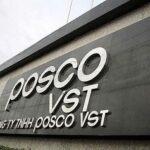After receiving comments on 13/16 texts from 10 departments and 3 related provinces; Ho Chi Minh City People’s Committee has completed the research project to build Can Gio International Transshipment Port in accordance with the Prime Minister’s directions.
The new project continues to emphasize the perspective of developing Can Gio International Transshipment Port as a coherent, modern, and smartly applied port management and operation in order to ensure efficient economic, social, and environmental factors, especially the conservation of the Can Gio mangrove biosphere reserve.

Location of Can Gio International Transshipment Port construction in Con Cho island area, Thanh An commune, Can Gio district, Ho Chi Minh City.
The objective of building Can Gio International Transshipment Port is to become the international transshipment center of Ho Chi Minh City and the region, attracting shipping companies, carriers, shippers, and logistics service providers from both domestic and international, participating in the global transport supply chain. Expected capacity by 2030 is 4.8 million TEUs, by 2047 is 16.9 million TEUs.
The construction site is located in Con Cho island area, Thanh An commune, Can Gio district, Ho Chi Minh City.
The selection of investors to implement the project, the investor’s capacity will be assessed in the project implementation steps in accordance with the provisions of the law on investment, investor selection and in accordance with the regulations in Article 7 of the Resolution 98/2023 of the National Assembly.
The scale of container cargo handling up to 250,000 DWT (24,000 TEU), feeder vessels with a capacity of from 10,000 – 65,000 tons (750 – 5,200 TEU), and barges with a capacity of up to 8,000 T (356 TEU).
The total length of the main port bridge is estimated to be about 7 km and the barge terminal is estimated to be about 2 km. The estimated total area is about 571 ha.
Operation technology: Container handling equipment will use energy-efficient, clean fuel, environmentally friendly running equipment.
Based on the cargo demand through the port, it is expected to be phased in two stages. The implementation of Phase 1 construction and port operation before 2030 (initially 2 main terminals/7 main terminals), Phase 2 (after 2030 to 2045) will continue to invest to complete all remaining main terminals.
Specifically: Preparing for investment from 2023 to 2025; building the port from 2025 to 2027; port operation from 2028.
Ho Chi Minh City People’s Committee assessed that when the port is operational (completion phase), it will directly contribute to the state budget from about 34,000 to 40,000 billion dong per year, estimated to create employment for 6,000 – 8,000 workers.
Regarding the nation, the port will contribute to affirming the position and role of Vietnam, positioning the nation on the maritime map with the role of international transshipment centers attracting large shipping and logistics companies worldwide, as important links in the global supply chain, contributing significantly to economic and social development, supporting import-export activities, and reducing intermediate costs.
Transport infrastructure will be invested to serve Can Gio International Transshipment Port. From now until 2030, invest in the Can Gio bridge to connect from Nha Be district to Can Gio district; invest in the Rung Sac traffic junction with the Ben Luc – Long Thanh expressway at Binh Khanh commune; upgrade and widen bridges on Rung Sac road.
Additional planning for urban railway routes along Rung Sac road (expected to connect Can Gio coastal urban area with Metro line 4 in Nha Be district); connect the Can Gio port cluster with Cai Mep; the coastal connecting road between Ho Chi Minh City (via Can Gio district) and Ba Ria – Vung Tau province.




































